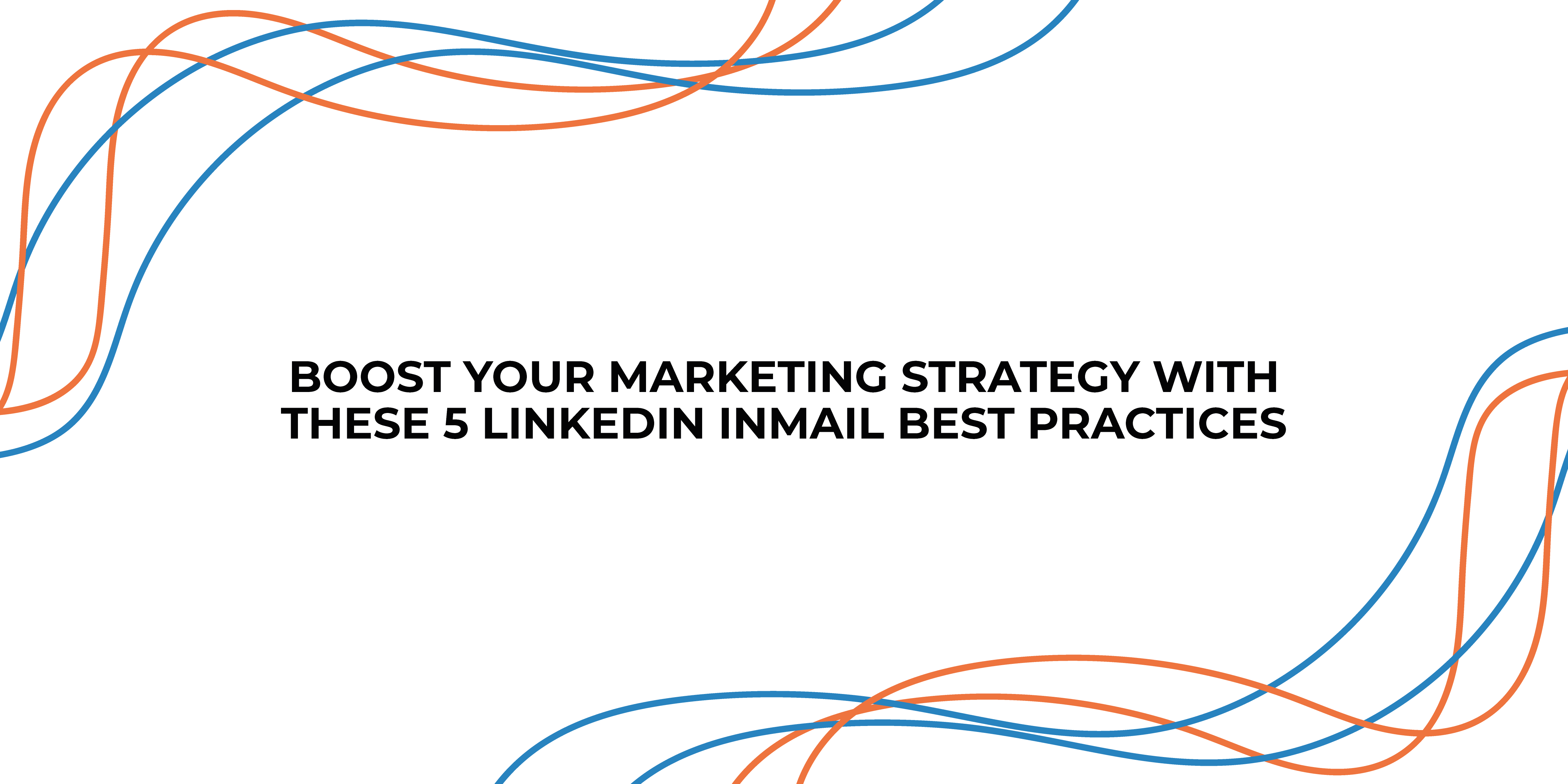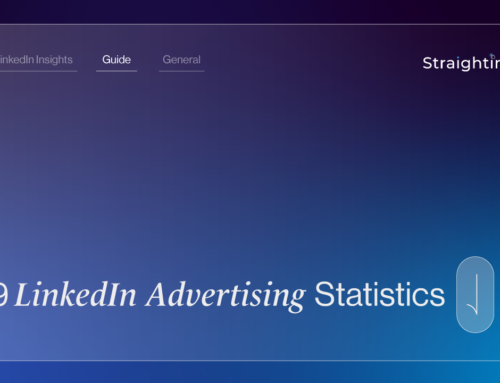Are you looking for ways to elevate your LinkedIn marketing strategy? Do you want to harness the full potential of LinkedIn InMail to generate new business opportunities? In this article, we will present you with five highly effective best practices for using LinkedIn InMail to propel your business forward.
But first, let’s take the time to understand what LinkedIn InMail actually is. If you’ve been using LinkedIn for a while, you’re probably familiar with InMail, for it is a powerful tool that offers several benefits for professionals, including salespeople and recruiters.
One of the main advantages is the ability to directly and personally connect with other LinkedIn members who might be difficult to reach through other means. This is especially useful when reaching out to potential clients, partners, or industry leaders.
InMail allows you to craft well-thought-out messages, giving you the opportunity to make a strong impression and showcase your expertise. This paves the way for more meaningful conversations and interactions compared to generic connection requests or regular LinkedIn messages.
Now, let’s delve into the five essential best practices to maximise LinkedIn InMail.
5 LinkedIn InMail Best Practices
You can employ several effective strategies to make the most of LinkedIn InMails. Here are five key practices:
1. Choose the Right Sender
Would you write a letter without first knowing the person you are sending it to? The first step should always be selecting the right person you will send it to. While it may be tempting to adopt a scattergun approach of sending your message to as many people as possible and hoping for the best.
Consider the consequences of such a hasty approach: your message may get buried in an overflowing inbox, treated with scepticism, or worse, result in being muted or marked as spam. This not only wastes your valuable time and effort but also diminishes the potential impact of your message.
It is much more effective to adopt a more focused strategy. By focusing on quality over quantity, you can invest your time and energy in creating tailored and compelling messages that are more likely to get a response from the recipient.
If you take the time to choose the most suitable recipient for your LinkedIn InMail, it shows that you have made an effort to understand their background, interests, and professional goals. This personalised approach not only captures their attention but also increases the likelihood of establishing a meaningful connection. This targeted approach resonates more deeply and effectively than a generic message sent to a multitude of people.
When you engage with the right person, you unlock the potential for fruitful interactions, networking opportunities, and collaborative endeavours. By being intentional in your recipient selection, you position yourself as a thoughtful and discerning communicator. This attention to detail sets you apart and maximises the impact of your message.
2. Include a Banner Ad
If you would like to boost the effectiveness of your InMailing efforts, consider incorporating an engaging banner ad. A well-designed and visually appealing banner can instantly grab the recipient’s attention and create a lasting impression. If you incorporate eye-catching graphics, colours, and imagery, you can make your message visually engaging and increase the chances of it being noticed.
When including a banner ad, it’s important to ensure that it complements the content of your message and aligns with your overall communication objective. The ad should be relevant to the recipient’s interests or professional field, making it even more impactful. For example, if you are reaching out to a marketing professional, a banner ad showcasing innovative marketing strategies or the latest industry trends can pique their curiosity and make them more likely to engage with your message.
However, it’s absolutely crucial to strike a balance and not overwhelm the recipient with a cluttered or intrusive banner ad – keep the design clean, professional, and aesthetically pleasing, and above all else, make sure the ad doesn’t overshadow the main message but rather enhances it. A visually appealing banner ad can help create a positive first impression and generate interest in your InMail.
3. A/B Test Your Campaigns
If you are to enhance the effectiveness of your InMail campaigns, it’s crucial to conduct A/B testing. A/B testing involves experimenting with different variations of your messages to identify the most impactful approach. By testing different elements such as subject lines, message formats, and calls-to-action, you can gather valuable insights and make data-driven decisions to enhance your results.
Start by selecting one element to test at a time. For example, you might begin by testing two different subject lines for the same message. Then split your audience into two groups and send each group the same message with a different subject line and analyse the open rates or response rates to determine which subject line performed better.
Next, move on to testing other elements of your InMail, such as the message format or the positioning of your call-to-action. Experiment with different variations and track the engagement metrics to identify the most effective combination.
Remember to define clear goals and metrics to measure the success of each variation. These metrics could include open rates, click-through rates, response rates, or even conversion rates, if applicable. By comparing the results of different variations, you can gain insights into what resonates best with your audience and tailor your future campaigns accordingly.
It’s important to note that A/B testing requires a large enough sample size to generate statistically significant results. Aim for a sizable audience to ensure reliable data. Additionally, consider running the tests over a reasonable period to account for different factors like time of day or day of the week that might influence engagement.
By consistently conducting A/B tests on your InMail campaigns, you can fine-tune your messaging strategy, optimise your results, and improve your overall campaign performance. Data-driven decision-making enables you to understand your audience better and deliver messages that have a higher chance of resonating with them, ultimately increasing the effectiveness of your outreach efforts.
4. Keep Your Messages Clear and Concise
When it comes to InMail messages, it’s crucial to keep them concise and to the point. Doing so allows you to effectively deliver your message while respecting the recipients’ time and attention.
By keeping your messages brief, you ensure that your main points are conveyed clearly and efficiently. Try and avoid unnecessary details or lengthy explanations that might overwhelm or confuse the recipient; instead, focus on the key information or request you want to communicate.
One way to achieve conciseness is by starting with a clear and compelling subject line that grabs the recipient’s attention. Within the body of the message, use short paragraphs and bullet points to break down the content and make it easier to skim through. Be direct and use simple language to express your thoughts. Avoid unnecessary jargon or complex terms that might hinder understanding.
Remember that on LinkedIn, your recipients are often busy professionals who receive numerous messages daily. By respecting their time and keeping your messages concise, you increase the chances of them engaging with your content. It shows that you value their time and are considerate of their busy schedules.
It’s important to strike a balance between being concise and providing enough context. This can be challenging but ensure that your message includes the necessary information for the recipient to understand the purpose and relevance of your communication. Keep it focused, but don’t sacrifice clarity or leave the recipient feeling confused or lacking crucial details.
5. Be conversational
When composing your InMail messages, adopting a conversational tone that fosters a personal connection with the recipient is important. Instead of using overly formal or sales-oriented language, aim to engage them in a genuine conversation that feels natural and relatable.
One way to achieve a conversational tone is by using friendly and approachable language. Maybe write as if you were having a face-to-face conversation, using words and phrases that resonate with the recipient on a personal level. This helps create a sense of authenticity and encourages the recipient to respond in a more open and comfortable manner.
For the same reason, avoid using excessive jargon or technical terms that might alienate or confuse the recipient. Keep your language simple, clear, and easy to understand. This helps ensure your message is accessible and relatable to a broader audience.
As already mentioned, it is important to personalise your message. Address the recipient by name and reference specific information demonstrating your familiarity with their background or interests. This shows that you have taken the time to understand their unique circumstances and establish a more personalised connection.
Remember, it is a dialogue, not a monologue, so encourage the recipient to engage in the conversation by asking open-ended questions or seeking their input on relevant topics. This invites them to share their thoughts, opinions, and experiences, fostering a two-way dialogue. Actively listen to their responses and demonstrate genuine interest and empathy in your subsequent interactions.
By adopting a conversational tone, you create an environment that encourages meaningful and authentic exchanges. This approach helps build trust and rapport with the recipient, making them more receptive to your message and more likely to respond positively.
Conclusion
So, there you have it: these five best practices offer you the opportunity to take your LinkedIn InMail strategy to new heights and drive your business towards success. By implementing these strategies, you can optimise your outreach efforts, forge meaningful connections, and unlock new business opportunities.






